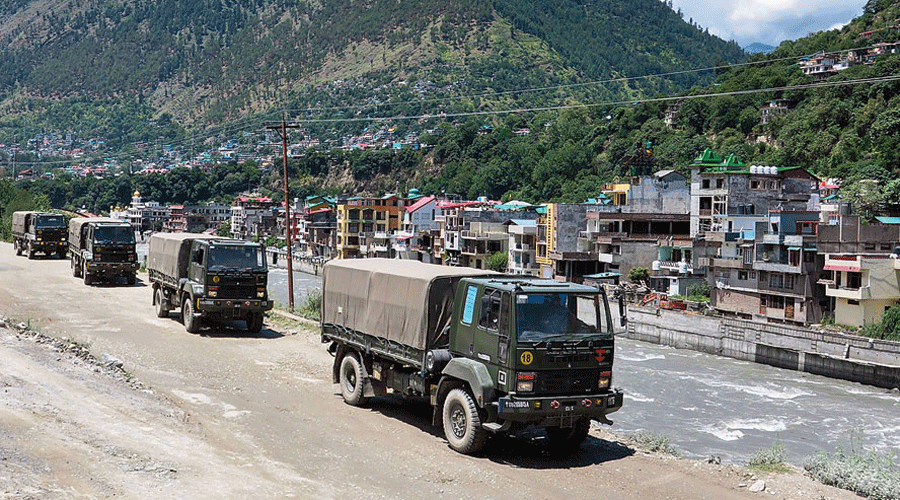The foreign ministry here said on Friday that India and China would complete the disengagement process in the Gogra-Hot Springs area in eastern Ladakh by September 12.
“As per the agreement, the disengagement process in this area started on 08 September 2022 at 0830 hrs and will be completed by 12 September 2022. The two sides have agreed to cease forward deployments in this area in a phased, coordinated and verified manner, resulting in the return of the troops of both sides to their respective areas,” the external affairs ministry said in a statement.
“It has been agreed that all temporary structures and other allied infrastructure created in the area by both sides will be dismantled and mutually verified. The landforms in the area will be restored to pre-stand-off period by both sides.”
The response from the ministry came a day after a joint statement released by India’s defence ministry said that both sides had begun withdrawing from Gogra-Hot Springs Patrolling Point-15 where the two armies had been locked in a standoff for over two years.
The statement from the external affairs ministry said: “The agreement ensures that the LAC in this area will be strictly observed and respected by both sides, and that there will be no unilateral change in status quo.”
“With the resolution of stand-off at PP-15, both sides mutually agreed to take the talks forward and resolve the remaining issues along LAC and restore peace and tranquility in India-China border areas,” the statement read.
The Chinese are yet to disengage from the strategic Depsang Plains where the People’s Liberation Army (PLA) is said to be entrenched 18km inside India-claimed lines.
Sources in the defence ministry said a “no patrolling buffer zone” had been created at PP-15 — the Indian troops retreating back to their permanent post at PP-16 and the Chinese PLA withdrawing towards their side of the LAC — as part of the disengagement agreement at Gogra-Hot Springs.
“The buffer zone is temporary, with both sides ceding patrolling rights till the standoff was resolved. India has not given up its right to patrol those areas,” said a defence ministry official.
In the past too, such demilitarised “buffer zones” had been created in the Galwan Valley (3km wide), Pangong Lake (10km) and Gogra (3.5km) as part of the disengagement process.
Veterans have expressed fear at the creation of these buffer zones, saying they amounted to “ceding further Indian territory” to the Chinese.
“This is shocking that India has again accepted the creation of buffer zone at Gogra-Hot Springs area. Patrolling by India’s army still remains suspended at other buffer zones created as part of the disengagement agreement. The very acceptance of these demilitarised zones undermines India’s sovereignty and territorial integrity,” a military veteran told The Telegraph.
A retired lieutenant general said the creation of buffer zones appeared to be on the Chinese terms and conditions. “These buffer zones pose a threat as the Chinese can always occupy the positions vacated by the Indian Army at these demilitarised zones. Why are we accepting their terms and conditions to achieve so called disengagement? I hope we are not again playing into the Chinese hands,” he said.
The Indian government, he said, should first clear its stand on whether there had been an intrusion by China in Ladakh or not.
“It has been over two years since Chinese incursion in Ladakh but the Indian government has been living in denial. The government’s official line has been that no intrusion had taken place. At the same time, they have been accepting the Chinese army terms and conditions and retreating from its positions to create buffer zones within Indian territory as part of the disengagement process,” the former lieutenant general said.
Four days after the June 15, 2020 clash at the Galwan Valley that killed 20 Indian soldiers and four Chinese troops, Prime Minister Narendra Modi had asserted that no one had occupied or was occupying Indian territory. The assertion had led to charges that it allowed Beijing to claim ownership of all the positions it held.











